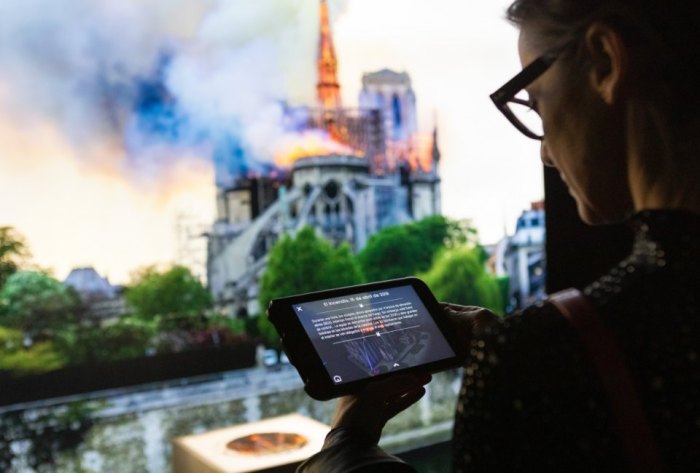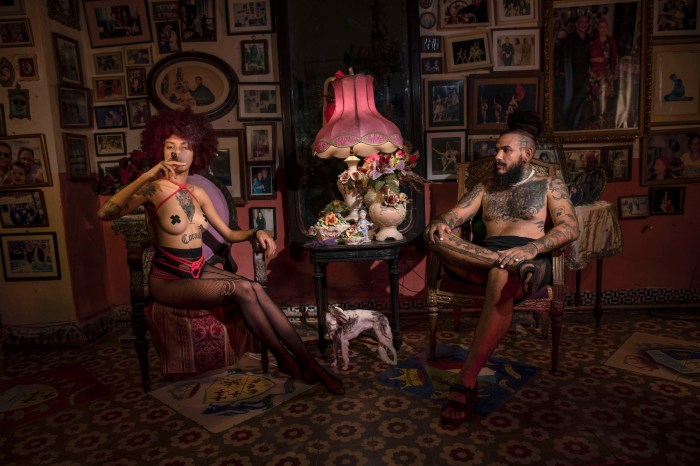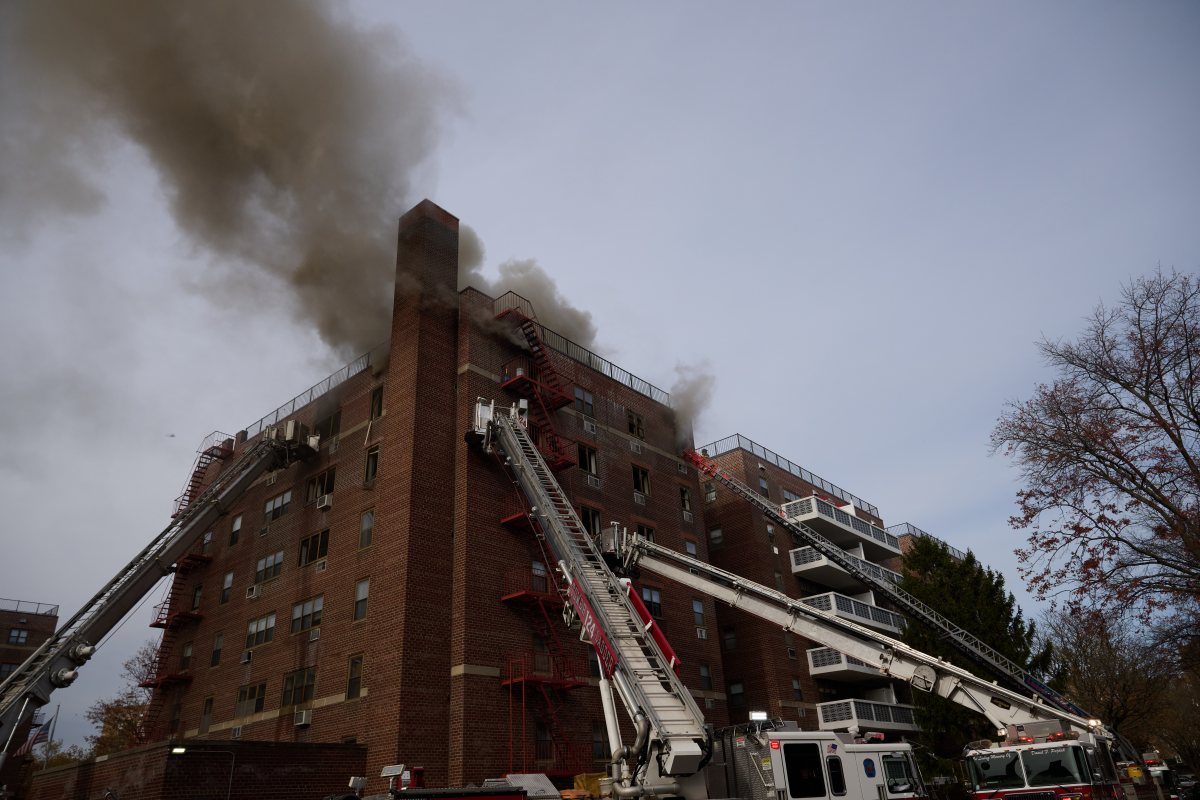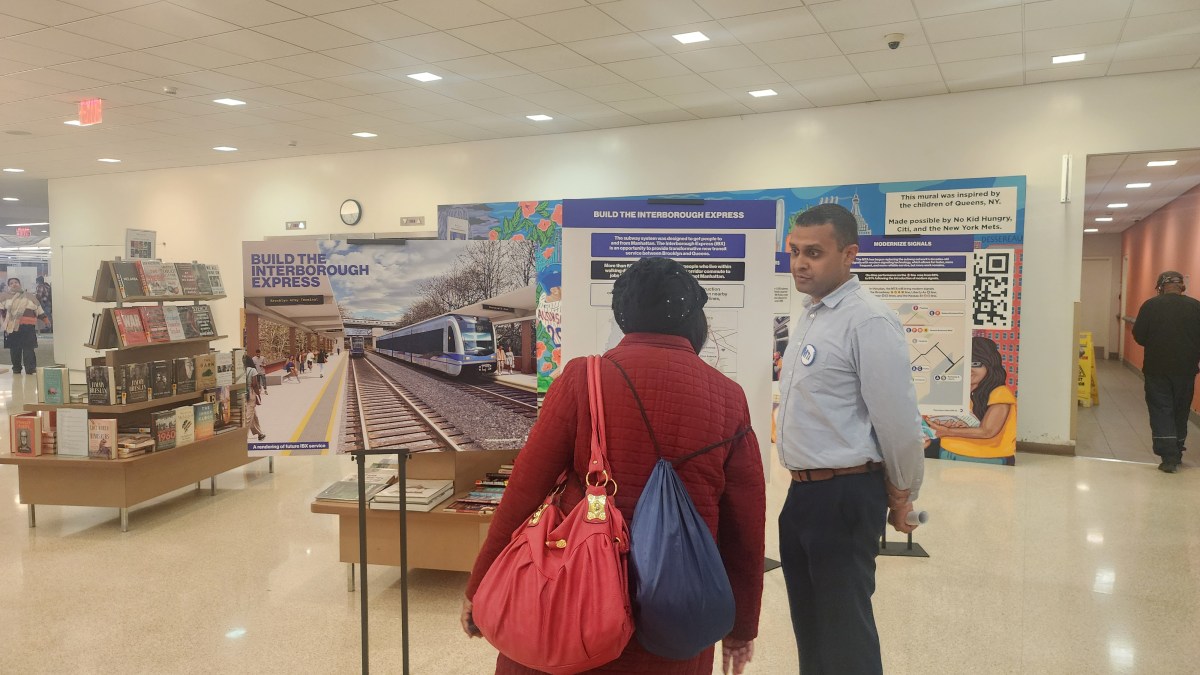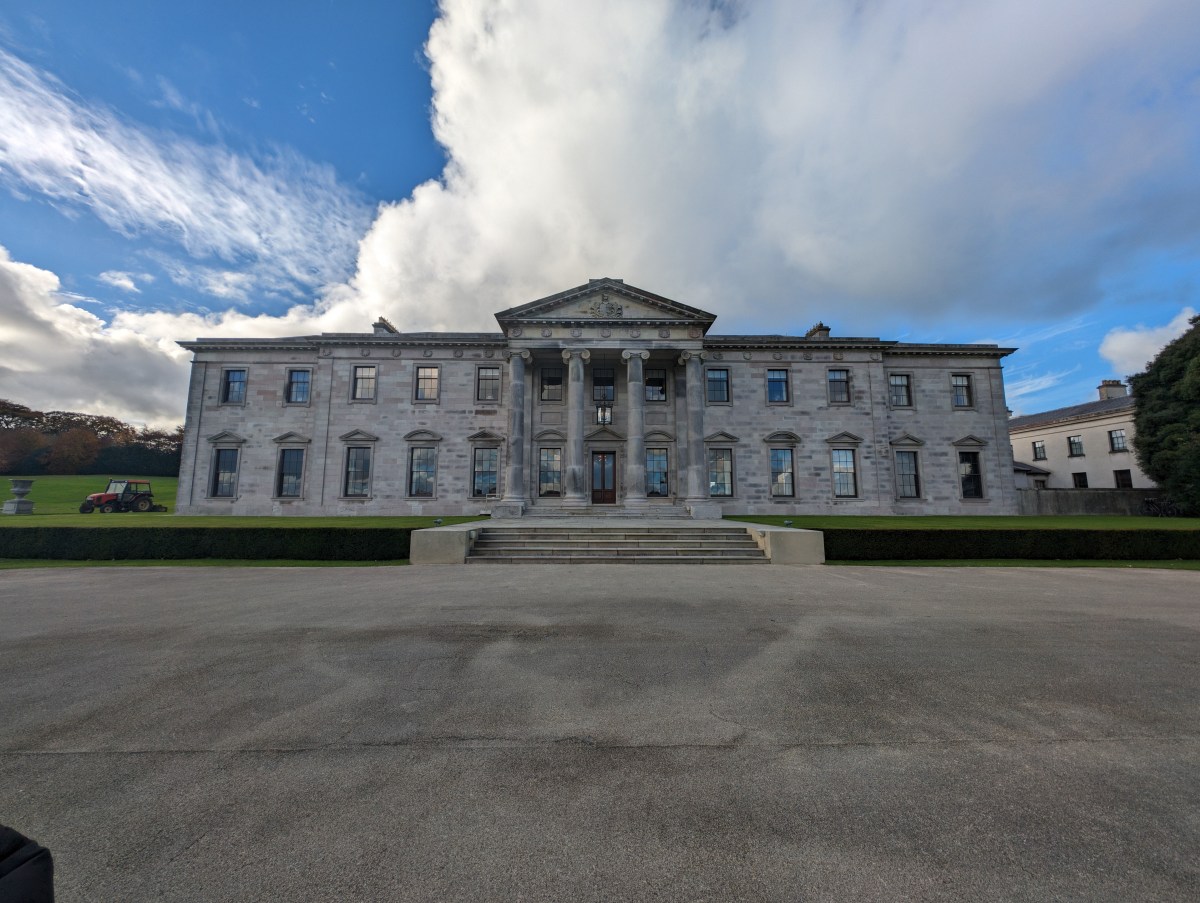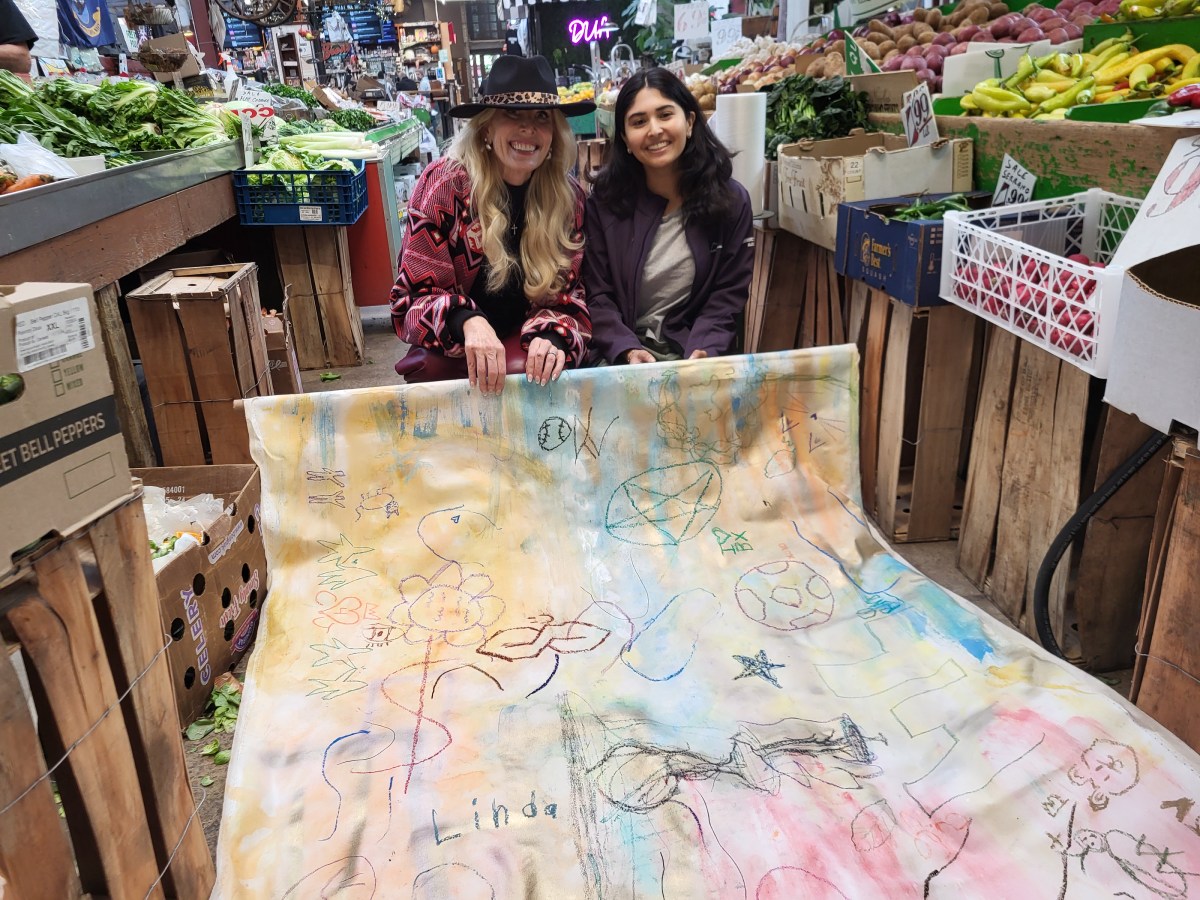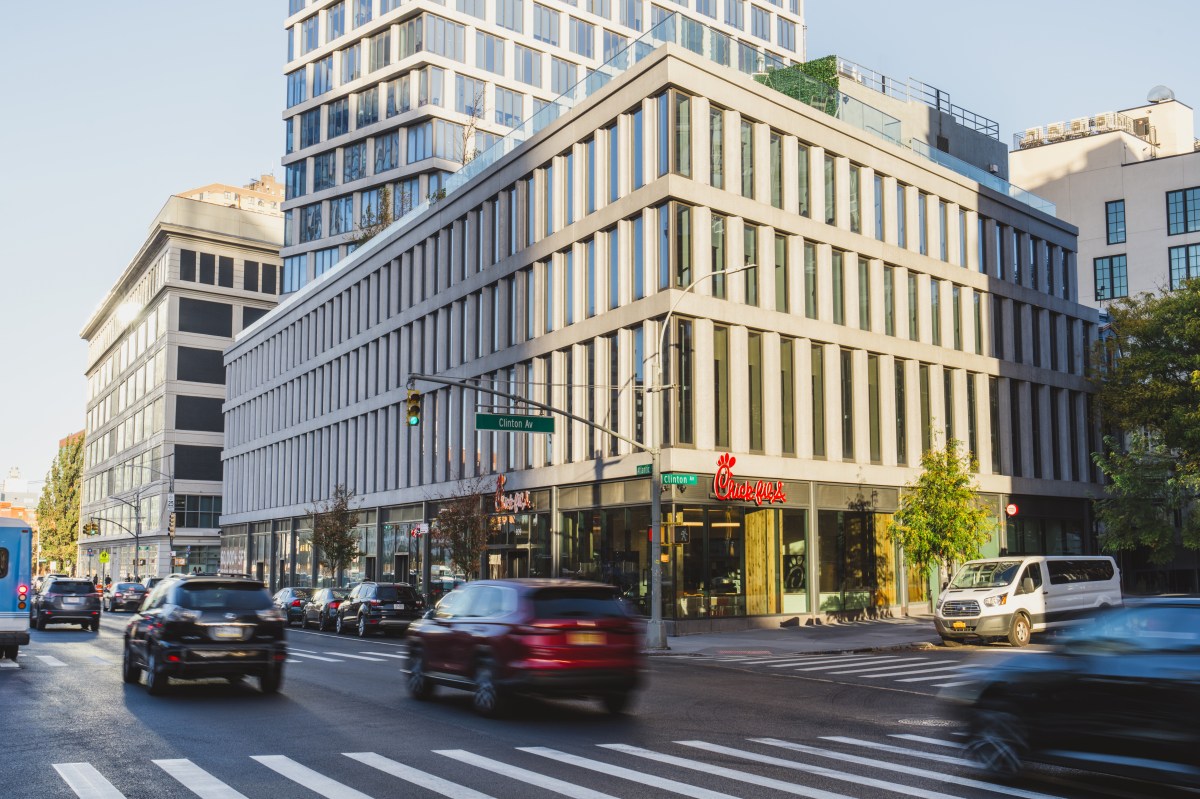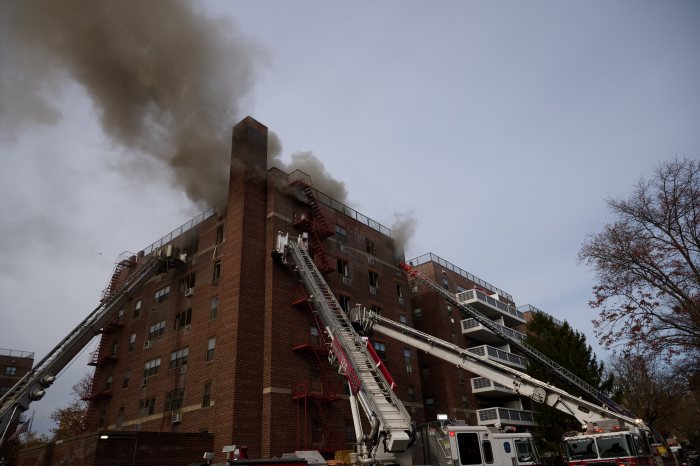BY SAM SPOKONY
After a lifetime of work, Bernard Aptekar looks to protect his legacy
Bernard Aptekar, 75, has never been a stranger to the dark aspects of human existence. Neither cryptic nor apologetic, his artwork has exposed and protested the cruelty and violence born of the development of civilization. But it was a startlingly new experience, he realized, to be unable to express himself. “About 11 years ago I had a stroke,” he said, matter-of-factly. “It was kind of devastating. Because I couldn’t speak at all. I had to learn to speak again.”
Sipping water from a wine glass, surrounded by bright overhead lighting, a pet bird and the vibrantly colorful paintings and sculptures he has spent more than five decades creating, Aptekar recalled his most difficult days. “I went back to teaching [at New York City College of Technology] nine months after I had the stroke. I’m sure my students didn’t know how difficult it was for me just to talk to them. But I did, even though I had to rehearse the speech I was going to give to the class. Even after that it was hard — I knew what I wanted to say, but nothing would happen. It was amazing.” That Aptekar finds amazement in his incapacity is, like so much of his artistic output, an extraordinary thing to witness. As he stood up and shuffled across the room to refill his glass, it became apparent that Aptekar was not wallowing in grief or looking for pity by sharing the anecdote about his stroke. He simply finds beauty in unexpected places. The same keen eye that has guided him through towering cultural opuses like “The Defeat of the City of Plutonium: A Holocaust Prevented” (which put the ethics of technological achievement on trial) and “The Heart of the Matter” (an empathetic treatment of Cuba’s communist revolutionaries) has led Aptekar to create a series of paintings in which he focuses on some of the most unique minds in modern history. Highlighting famous figureheads
“Portraits of an Intellectual and Political Landscape” (which can be seen at the Galicia Jewish Museum in Krakow, Poland through October 30) is a celebration of individual achievement, showcasing what Aptekar considers a collection of the 20th century’s greatest societal innovators. Among his subjects are Barack Obama, Mikhail Gorbachev, J. Robert Oppenheimer, Arthur Miller and Philip Roth. Their unique achievements are represented by contextual backgrounds that range from splashes of color to floating heads. Even though Aptekar (who is Jewish) is being featured in a museum centered on Jewish culture, he refuses to label himself as an artist within any specific religious or cultural tradition.
“There was an article about the show in Krakow, and the guy who wrote it questioned whether or not I consider myself a Jewish artist,” said Aptekar. “But I don’t. I’m just an artist. The kind of work someone like Philip Roth [who is considered to be a quintessential Jewish-American novelist] did, it just has a different point of view than what I do.” Being, in his own terms, a “radical” and an “outsider” has forced him to perceive the world solely on his own artistic terms. To illustrate that, he walked from the kitchen to a side vestibule of the apartment to point out a decades-old painting depicting himself scuba diving over New York City. Though it isn’t included in his current exhibit, it speaks volumes about the way Aptekar understands and presents his subjects, as well as the ideas he treasures most within his work. “It was very interesting,” he said thoughtfully, “because I was trying to make landscapes, and I could never quite figure out the right way to do it. But then it dawned on me: Just go from above! Ah! Looking at things from the street level just isn’t me.” Living in Soho since 1964
For someone whose imagination levitates above the city’s gridlock, Aptekar is quick to describe his passionate relationship with the SoHo neighborhood he has called home for nearly 50 years. He first moved into a loft at 100 Prince Street in 1964 — a time when, he recalls, “It was just artists. There was really no one else here.” In 1973, Aptekar took up residence in an apartment at 152 Mercer Street — where he’s lived ever since. By adding walls to display his work and more space to store the larger sculptures, Aptekar has developed an intrinsic connection with his physical surroundings that (although he continues to travel when he can) provides everything he needs to tap into his undying urge to create. “At this point, I don’t think I’d ever be comfortable living in a place that isn’t full of art,” he said with a laugh. “I’m too used to it. I think I could even use a little more space.” “Portraits of an Intellectual and Political Landscape” is Aptekar’s second show to be featured in Poland — and his bond to that country exists through his mother, who emigrated from there to Brooklyn (along with his Ukrainian father) in 1921. Though he remembers very clearly that his parents came to America with the sole purpose of starting new lives, Aptekar gained valuable insight from their experiences as immigrants — a sense of appreciating every facet of existence that he carried with him to SoHo. When asked about the specific values he learned from his parents’ journey into a strange (and sometimes difficult) new environment, Aptekar shared an observation that he applies to both his art and his everyday philosophy. “Life has to be serious as well as playful, and you have to do it all,” he said. “You have times when you’re living your life fully, and it’s wonderfully exciting, and you also have to deal with the times that are not so exciting.” An urge to ensure the story survives
Aptekar approaches his own work with that same urge to tell the whole story — whether it’s beautiful or horrible. As he recently prepared to travel to Krakow (for an appearance at his current exhibit in the Galicia Jewish Museum), he flipped through booklets full of photos and commentary from past shows. It’s not enough for an observer to look just at his most recent paintings, Aptekar said emphatically — because to him, understanding an artistic career means understanding the personal growth that comes alongside it. “My shows often include pieces of work from different periods of my career — and it’s because the best way to look at it is to combine it. Even though I want to, you can’t do everything at once. It takes a different kind of focus to really know what the work is all about.” Now, with a lifetime of art as well as the physical and emotional test of his stroke behind him, Aptekar has found new purpose and perspective in his visit to Krakow — which will last until his exhibit closes in October. Upon returning to SoHo, Aptekar welcomes the public to visit his studio on Tuesdays and Saturdays. Appointments can be made by calling 212-226-7154. “I’d never thought very much about this when I was younger; I was just so determined to do the art. But now, and maybe it’s just a symptom of being older, I think I know what I have to do. I have to protect my work. This means that I have to continue to get it shown; and I have to get enough people interested in the work to make sure that it will survive after I’m gone.” Not one to be fazed by the looming presence of his final days, Aptekar is excited to have his work shown in Europe — where, in his experience, those who view his work generally do so with a greater sense of history than American audiences do. “It’s because of the wars they’ve been though,” Aptekar said, “and the way it directly affected the lives of so many people.” For an artist who has protested wars from Vietnam to Iraq, that perspective may be just what Aptekar needs to give new life to his massive body of work. As he walked outside to survey the skyline visible from his SoHo rooftop terrace, he wasn’t worried about much. After half a century of color, the man who has painted the faces of society at their best and worst is comfortable — and he’s still ready to explore. To access Aptekar’s paintings, sculpture and seriographs, visit aptekar.net/bernard. For info on “Portraits of an Intellectual and Political Landscape” (at the Galicia Jewish Museum in Krakow, Poland through October 30), visit en.galiciajewishmuseum.org.








